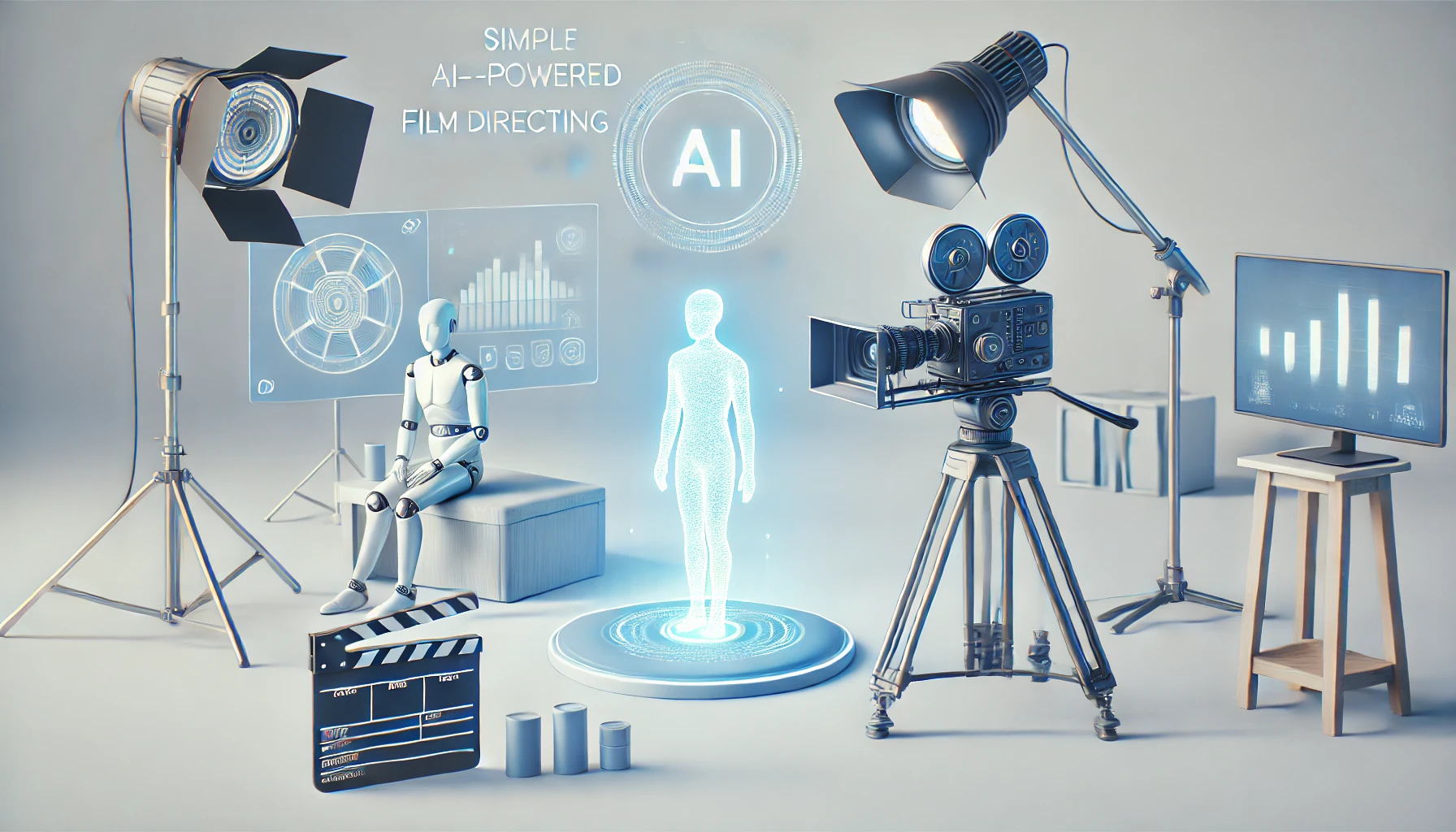AI-Powered Generative Tools Revolutionizing Content Creation
Introduction
In an age where content is king, creating high-quality, engaging, and original material quickly has become a top priority for businesses, creators, and marketers alike. But what if the future of content creation didn’t lie in hiring massive teams or spending countless hours brainstorming and writing? Instead, what if artificial intelligence could take over many of these tasks, dramatically improving efficiency and even enhancing creativity?
Welcome to the world of AI-powered generative tools, where the boundaries between human creativity and machine intelligence are rapidly blurring. From text and images to videos and music, AI is empowering creators to generate content at an unprecedented scale. This isn’t the distant future; it’s happening now, and it’s changing the landscape of content creation forever.
What Are AI-Powered Generative Tools?
AI-powered generative tools use machine learning algorithms, particularly deep learning and natural language processing (NLP), to generate new content. These tools are designed to mimic human-like creativity by analyzing massive datasets and learning patterns in order to generate original material.
For example, GPT-3 by OpenAI is a language model that can write articles, summarize content, create poetry, and even answer questions with impressive accuracy. Similarly, image-generating AI models like DALL·E can create entirely new images based on text prompts, while RunwayML and Artbreeder have created tools that allow users to generate visual artwork and animations.
In short, these tools are transforming the creative process by automating time-consuming tasks and opening up new possibilities for creators of all kinds.
Key Benefits of AI-Powered Generative Tools
Now that we’ve introduced the tools, it’s important to delve into how these tools benefit content creators. Here, we can explore several major advantages.
1. Increased Efficiency and Speed
Content creation often requires hours or even days of brainstorming, drafting, editing, and refining. AI tools streamline this process by automating much of the grunt work. Writers, for example, can now rely on tools like Jasper.ai to draft articles, blog posts, or social media content in a fraction of the time it would take to do manually. AI can instantly generate initial drafts, suggest headlines, and even optimize content for SEO, enabling creators to focus on refining their ideas rather than spending hours on initial creation.
2. Enhanced Creativity and Inspiration
Generative tools aren’t just about speed—they’re also about fostering creativity. With AI, creators can explore ideas they may never have considered, as the tool can generate content based on vast databases and varied inputs. For artists, AI-powered tools like DALL·E 2 allow them to generate stunning visual concepts based on simple prompts, opening the door to new creative possibilities that might not have been possible through traditional methods.
3. Cost-Effective Content Creation
Hiring skilled writers, graphic designers, and other creatives can be expensive, especially for smaller businesses or independent creators. With AI-powered tools, these entities can generate content without the need for extensive teams, saving both time and money. For example, an e-commerce business can generate product descriptions automatically using Copy.ai, while a marketer can create personalized email campaigns without hiring a copywriter.
4. Personalization at Scale
AI can help personalize content for individual users, which is increasingly important in today’s marketing landscape. AI tools can analyze customer data and create highly targeted and relevant content based on preferences, past behavior, or demographic information. Personalized content resonates better with audiences and leads to higher engagement, and AI can accomplish this task on a large scale, creating individualized messages for millions of customers simultaneously.
Real-World Applications of AI-Powered Generative Tools
Let’s look at specific industries and sectors where these tools are making a real impact.
AI in Writing and Content Marketing
In the world of content marketing, AI-powered tools like Copy.ai and Writesonic are changing the way businesses create content. Marketers can generate blog posts, social media captions, product descriptions, and even newsletters within minutes, allowing them to focus on strategy and optimization rather than the manual effort of writing. AI can also suggest SEO-friendly keywords, ensuring that content is optimized for search engines without requiring expert knowledge.

AI in Visual Arts and Graphic Design
AI-generated imagery is pushing the boundaries of digital art and design. Tools like Artbreeder, DeepArt, and RunwayML allow users to create complex visuals by simply manipulating sliders or providing text descriptions. Graphic designers can now generate stunning visuals faster, opening up new possibilities for advertising, video games, and visual storytelling. Additionally, AI is enhancing user-generated content, allowing users with little design experience to create professional-quality visuals for their projects.
AI in Music Composition
AI is not just limited to written or visual content; it’s also making waves in the world of music. Platforms like Amper Music and Aiva use AI to create music based on input parameters such as mood, genre, and tempo. These tools are enabling musicians and content creators to generate custom music tracks without needing deep knowledge of music theory or composition. This is especially useful for content creators who need royalty-free music for videos, advertisements, and games.
AI in Video Production
AI’s role in video production has skyrocketed in recent years. Tools like Synthesia use AI to create realistic human avatars for videos, while Pictory can take long-form content and automatically generate short, engaging videos. AI-powered video editing software is making it possible to produce high-quality videos without the need for expensive equipment or professional editors. This has democratized content creation, allowing creators to produce professional-grade content on a budget.
Challenges and Considerations of AI-Powered Generative Tools
While the benefits are clear, it’s important to acknowledge the challenges and potential risks associated with AI-powered generative tools.

1. Quality Control and Ethical Concerns
AI-generated content is only as good as the data it is trained on. There’s a risk of generating content that’s biased, inaccurate, or harmful if the AI has not been trained on diverse, high-quality data. Additionally, AI-generated content could be misused for spreading misinformation, fake news, or deepfakes, posing ethical dilemmas for creators and businesses.
2. Creativity and Human Touch
While AI can generate impressive content, there are some things that machines still struggle with—particularly nuanced, human experiences or emotions. The question remains whether AI-generated content can truly replace human creativity, or if it’s simply a tool to enhance human creativity.
3. Job Displacement and Skill Shifts
As AI becomes more prevalent in content creation, there are concerns about job displacement, particularly for traditional content creators. However, while AI can automate many tasks, it still requires skilled operators to guide the process. The future likely lies in a hybrid model, where AI enhances human capabilities rather than replacing them.
Conclusion
AI-powered generative tools are undeniably revolutionizing content creation, enabling businesses, artists, and marketers to produce high-quality content more efficiently and creatively. These tools open up new possibilities for personalizing content at scale, driving innovation, and reducing costs. However, as with any powerful technology, they come with challenges that need to be addressed to ensure ethical and responsible usage.
Are you ready to harness the power of AI in your content creation process? Embrace the future of content with AI-powered tools, and take your creative projects to the next level today. Whether you’re a marketer, writer, artist, or entrepreneur, now is the time to experiment with AI—unlock new efficiencies, enhance your creativity, and drive success.




